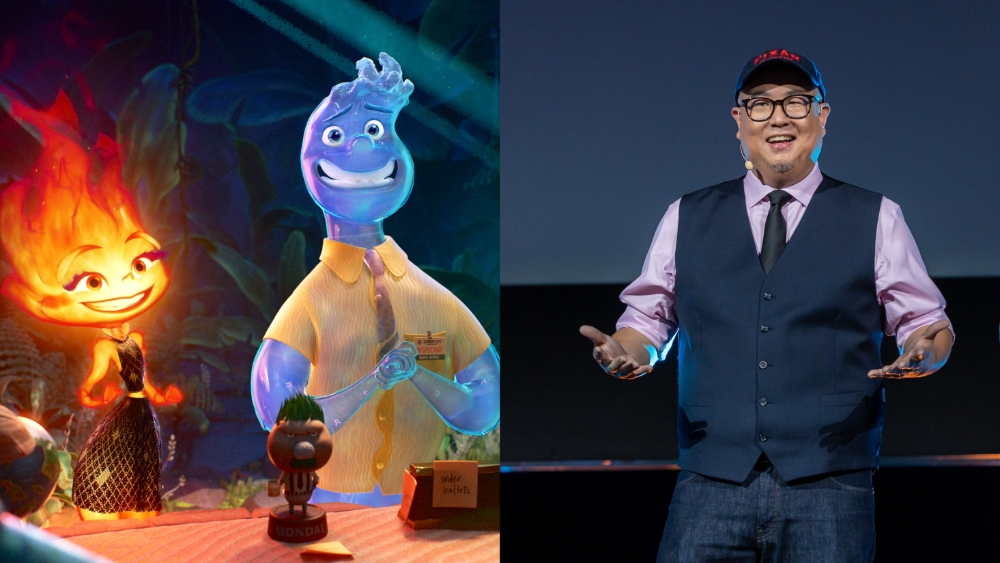‘Elemental’ Story Parallels Life of Director Peter Sohn
Peter Sohn’s latest film, “Elemental,” from Disney/Pixar, tells the story of characters made of opposite elements who fall in love. The story is a metaphor for the director/writer’s life where he stepped out of the element of his own Korean culture to marry for love and pursue a career in animation. The animated tale closed the recent Cannes Film Festival, will screen at the prestigious Annecy International Animation Festival and is set to be released June 16 in the U.S.
What does it mean to have “Elemental” play at Cannes?
I think my heart goes immediately to the crew, meaning the amount of love that they had put into it. I just think this type of recognition is quite an honor. It’s very overwhelming. At the same time, I hope that the crew is proud of the work that they’ve done. Having this film at Cannes, this is all so crazy. I’ve never gone through anything like this before, even though I’ve worked [at Pixar] for so long. I’m definitely honored, and I have this bubbly sense of pride.
This is your second feature film as a director, after “The Good Dinosaur” in 2015. You also directed the short “Partly Cloudy” in 2009. How did this experience compare to those?
It was about trying to make a film that could connect in a way that was really personal for me. With the previous film, “The Good Dinosaur,” as a director, it wasn’t as personal for me and, though I’m very proud of the film, the reaction was lower, and people did not have the best view of it. So, in starting this film, it was just feeling lucky and the privilege to make another movie and really trying to put all that I had into it. It was the idea that cinema is an immersive, emotional, fun experience that can come out of making something so personal. That was the goal. Working [at Pixar] as long as I have, you learn a lesson early on about what it means to stay vulnerable in a creative work. On “Finding Nemo,” I remember pitching to the director of storyboards. It was my first storyboards pitch. And I had spent all this time putting art into this sequence and it got shredded. When I pitched it, it was just like, “This is not working.” It really hurt, so from there you have to make a decision about whether you put your heart out there again. I bring it up only because I made a choice then of, “Yes, this art form that we love deserves that vulnerability and openness and everything I can give to it.”
Your two main characters both struggle with their own families as they fall in love with someone outside their cultures. Did this idea come from your own experiences growing up as the son of Korean immigrants?
Yes, it’s the burden of culture and passing the torch of carrying a piece of heritage inside of you and trying to decide what to do with that heritage. I have kids that come from different, mixed cultures. I’m Korean and my wife is half-Italian, part- German and part-English. The feeling of it can sometimes be like a burden. I wonder if I am I breaking the chain in my life because I’m not pushing the Korean language and culture. And our main character, Ember, even though her culture is fictional, she’s dealing with very similar issues of trying to understand her life in a place that was not her parents’ home.

